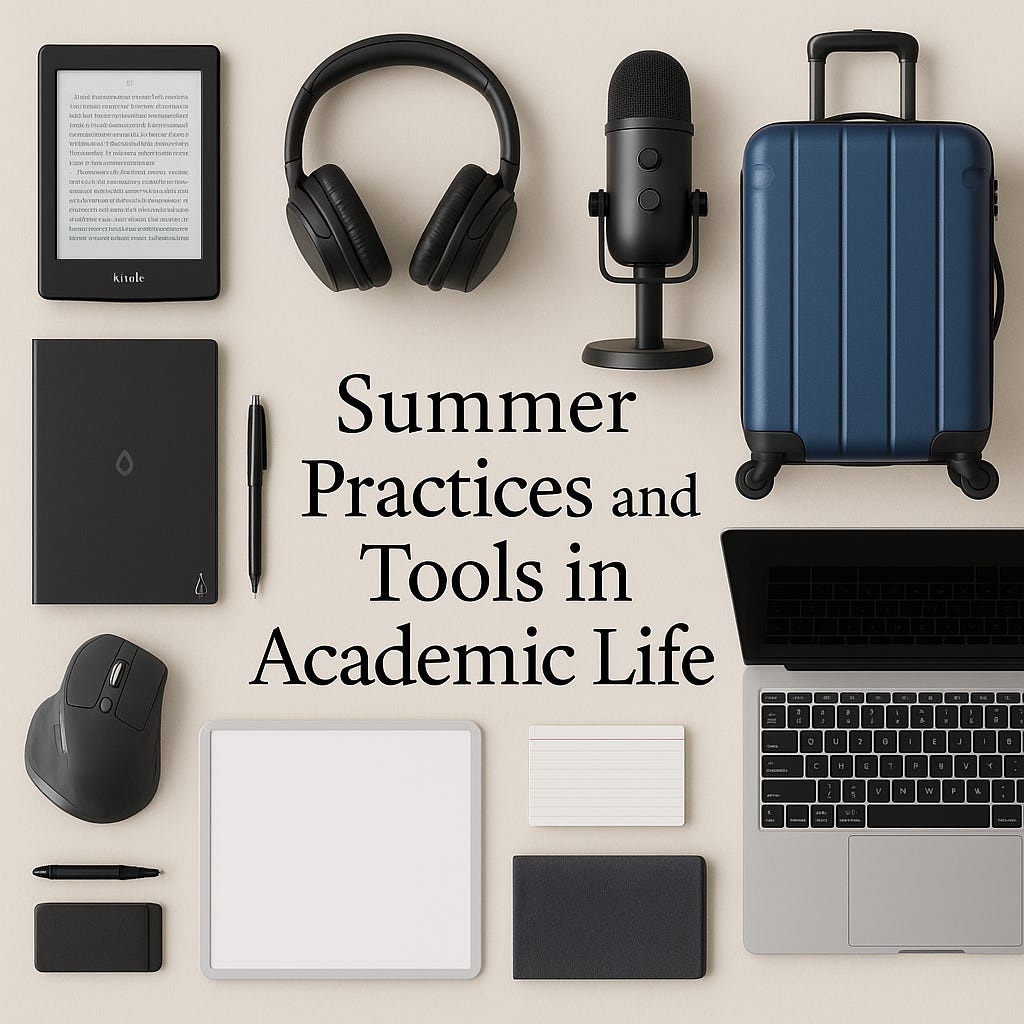Summer Practices and Tools in Academic Life
Reflections on Travel, Research, and Renewal
Summer, for many academics, marks a transitional season. The pause in formal teaching responsibilities often opens space for writing, fieldwork, conference travel, and curricular planning. This period, while often described as “free time,” is rarely unstructured or leisurely in practice. Instead, it becomes a time of concentrated effort—one where both e…



